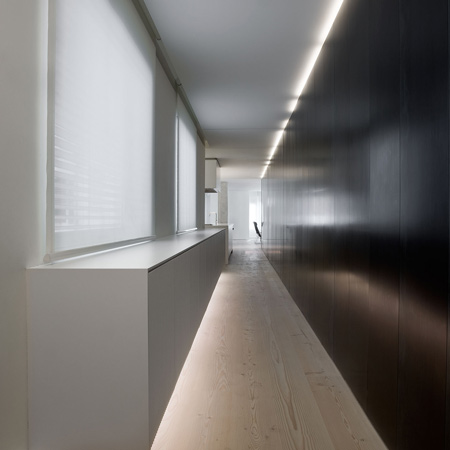
Reform of Housing in Pamplona by Carlos Pereda Iglesias and Óscar Pérez Silanes
Young Spanish architects Carlos Pereda Iglesias and Óscar Pérez Silanes have completed the refurbishment of an apartment in Pamplona, Spain.
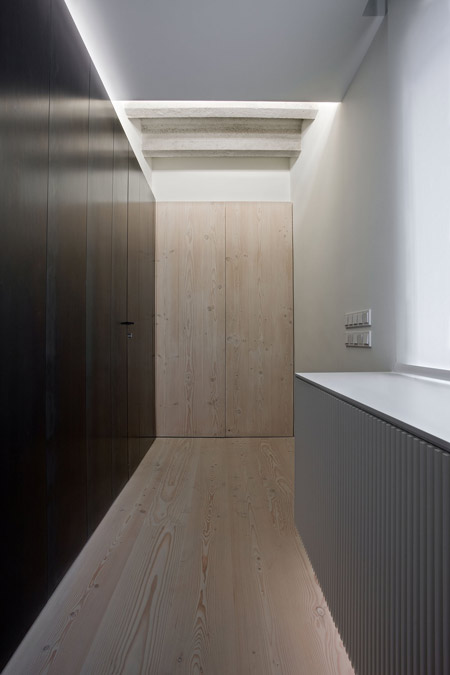
Called Reform of Housing in Pamplona, the project involved renovating an apartment originally arranged around a central corridor.
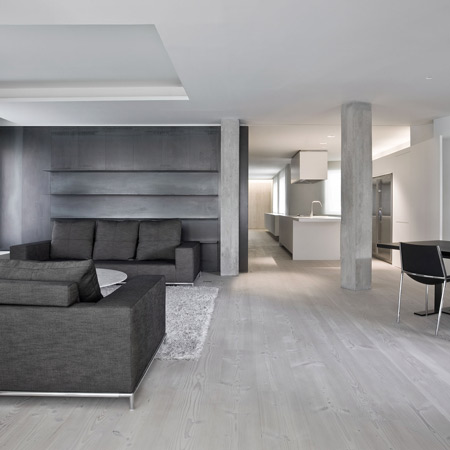
Instead, the architects divided the living, kitchen and bedroom spaces with a black steel wall without handles that folds away to reveal the more private rooms.

Materials include wood, stone and black steel.
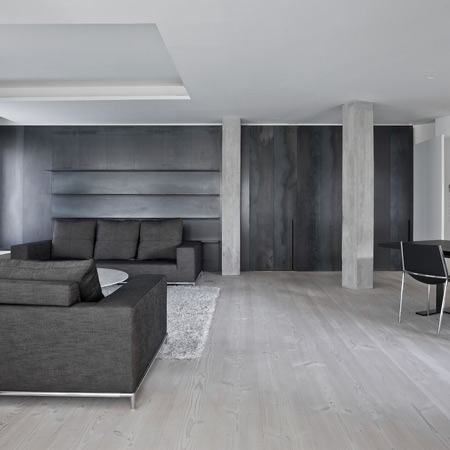
Photographs are by José Manuel Cutillas.

Here's some more information from the architects:
--
The apartment, in its previous state, showed a usual old town structure, with an arrangement of spaces and bedrooms typically segmented and organized around a corridor that crossed it entirely.
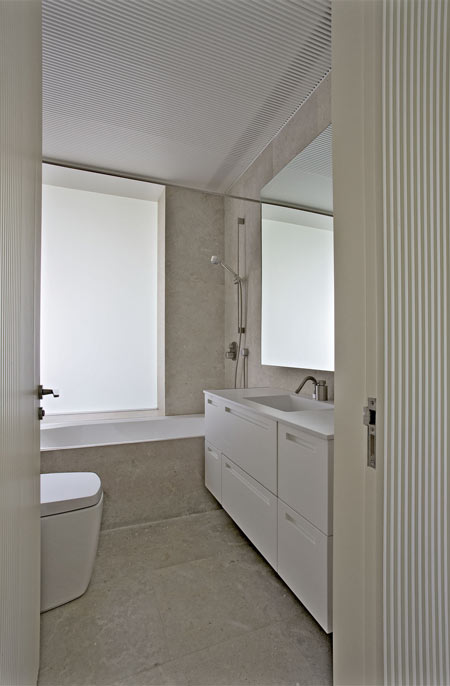
The house had an irregular ground plan of 196.70 m2.
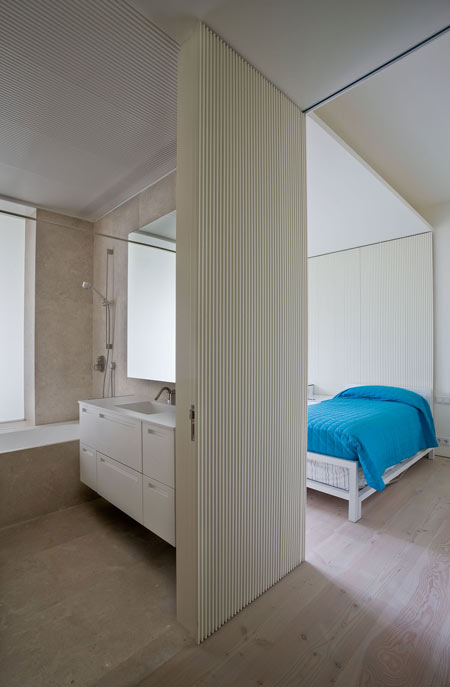
The project seeks to provide a contemporary response to new functional requirements.
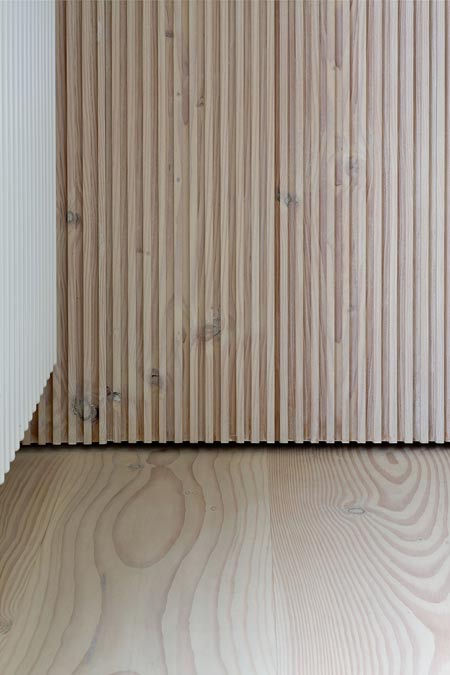
The idea was to create a pleasant space, where the apartment surface is fully optimized.
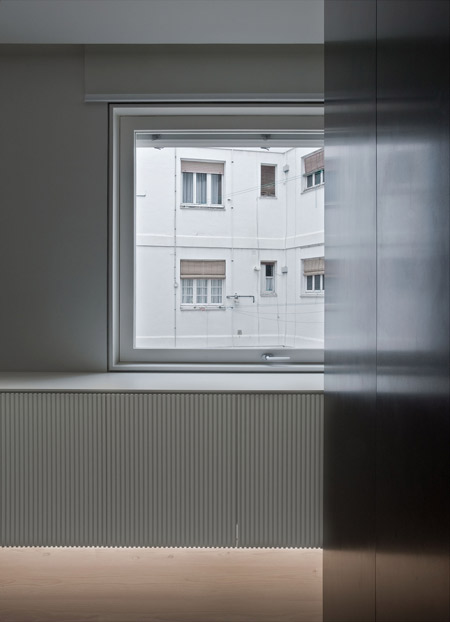
The organization plan of the apartment is very clear, and can be summarized into three guidelines, in one hand; the arrangement of the dining room is placed at the corner of the building as a privileged space taking advantage of the location, house face and nicest view.
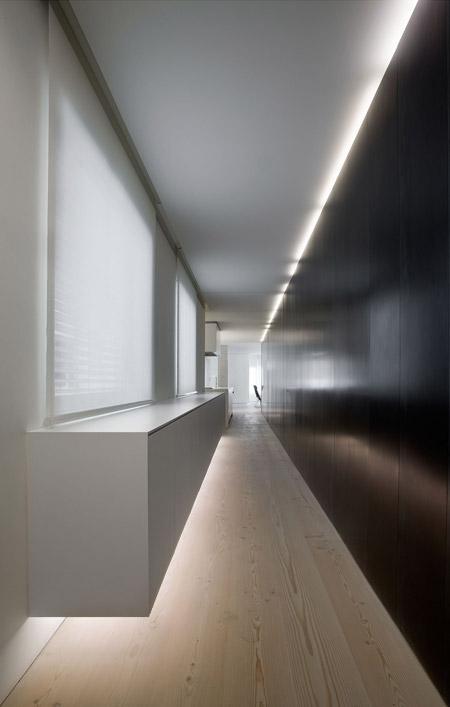
Furthermore, the common area is designed in order to get a visual, physical and material continuity from the access to the dining room, avoiding a dominant corridor solution as presented its original state.
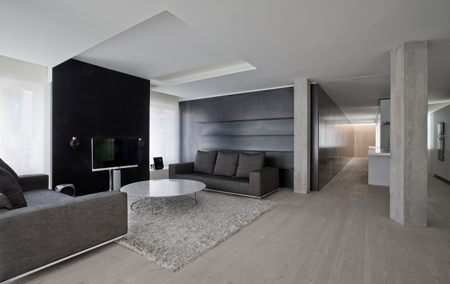
The kitchen is placed in this zone, denaturing its way through role, optimizing, with personality, the new space; which at the same time can be divided and became independent if required.
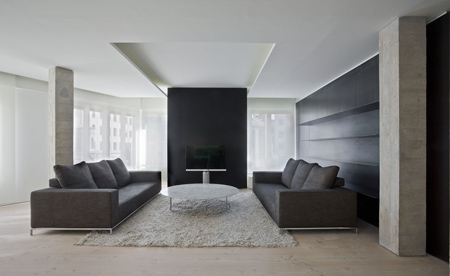
Finally the bedrooms are arranged as a closed hermetic package, defining the private space with a black steel panel where the access, mechanisms and handles are not marked in order not to disrupt the clean perception of the wall and space.
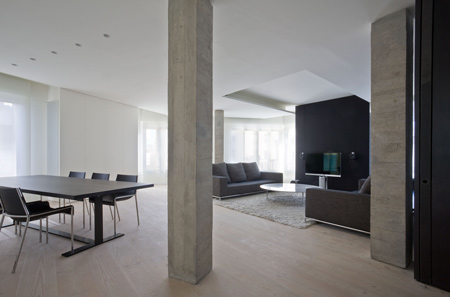
Special mention requires the fourth and multirole bedroom which is hidden behind the kitchen panels, solving the irregularities that the plant of the apartment presents.
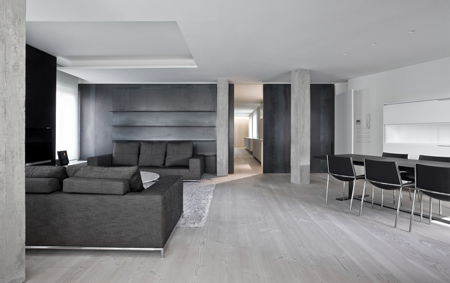
Constructively the project is defined by the chromatic balance between the different coatings, different textures and materials which provides a uniformity that gives to the space an homogeneous atmosphere that the constructive simplicity seeks to achieve.
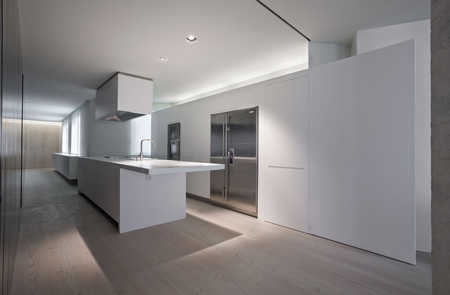
The presence of natural wood in several finishes and formats, the austere materiality of Campaspero stone in bathrooms and the accuracy of the black steel provide the quality and warmth to the spaces giving to the apartment its final personality.
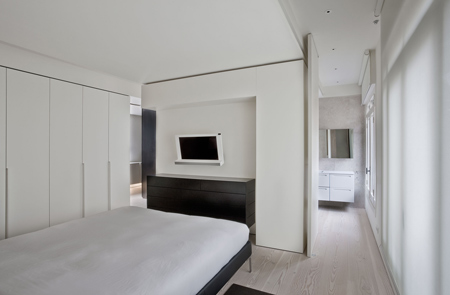
It is interesting to remark the materiality of the black steel, which defines the space of the bedrooms and conceptually represents the private life of the family.
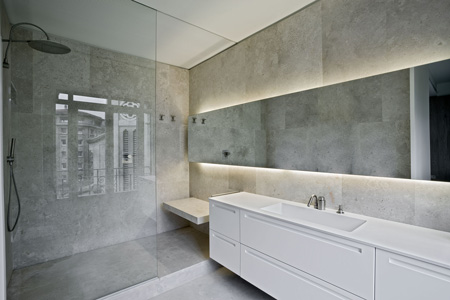
This smooth and sealed wall is solved with a patterned panel of black steel 3 mm. thick.
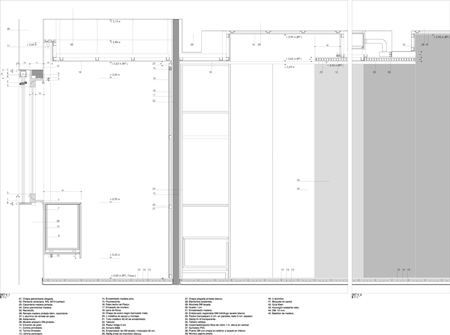
click for larger image
The access doors to this volume, within the material pattern, in geometrical and mathematical continuity of the coating, are solved with hidden springs without handles in such way that reinforces the hermetism against the flow of space that is intended in the main area.
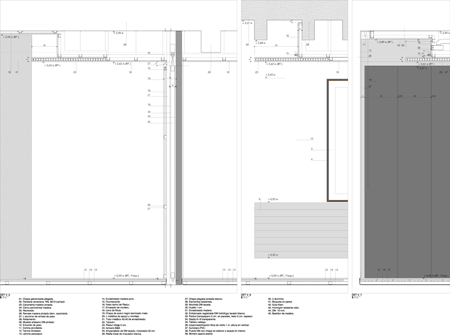
click for larger image
Likewise, the neutral and selected furniture helps to complete the atmosphere that the materiality seeks to define.
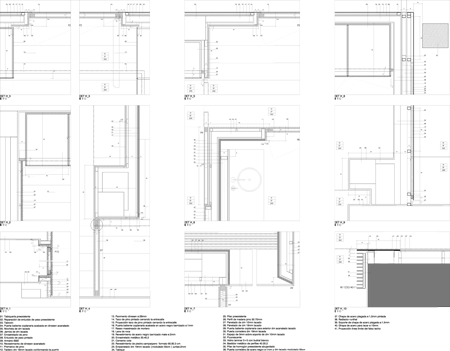
click for larger image
As a summary, the accurate expressiveness of the selected materials, the interest in the value and perception of the space and taste for formal simplicity, are some of the arguments used to design this project.
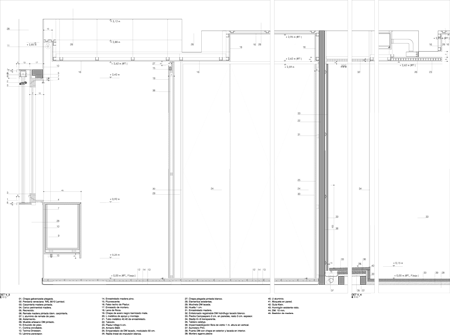
click for larger image
Project: Reform of Housing in Pamplona
Authors: CARLOS PEREDA IGLESIAS y ÓSCAR PÉREZ SILANES, arquitectos
Rigger: Pedro Legarrtea Nuín
Contributors: Inarq, Sara Andorinho
Area (m2): 196,70 m2 built
Furniture: La sede
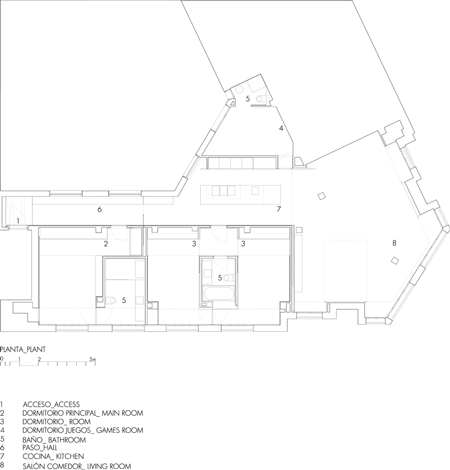
click for larger image
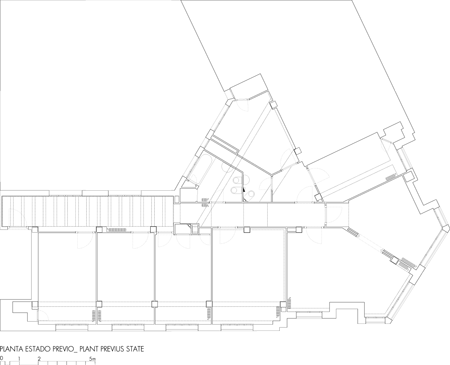
click for larger image
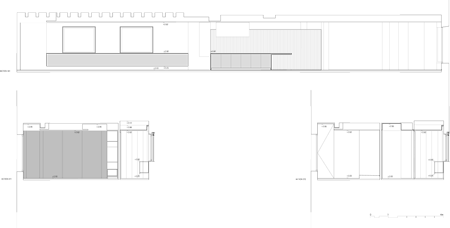
click for larger image
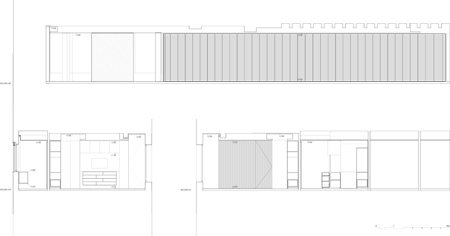
click for larger image